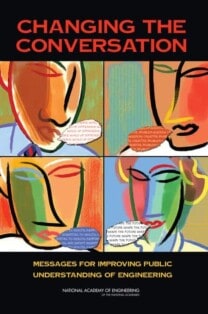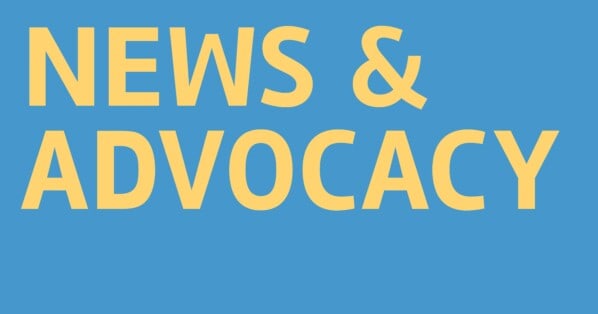ANNE:
Greetings, and welcome to “Backstory,” part of the SWE Diverse podcast series. Here, we’ll explore interesting topics that we uncover in our research for SWE Magazine articles – yet that, for various reasons, don’t make it into print. I’m Anne Perusek, SWE’s Director of Editorial and Publications.
JON:
And I’m Jon Reisfeld, a SWE Magazine writer based in Baltimore, Maryland.
ANNE:
We’re calling today’s episode “If She Can See It, She Can Be It,” which happens to be the motto of the Geena Davis Institute on Gender in Media (or GDI). We’ll be looking at GDI’s important role as the first and only research-based organization to track gender bias in children’s and family-oriented films and TV shows. The group was founded in 2004 by Academy Award®winning actor, Geena Davis, and has examined the content of hundreds of top-grossing films and popular TV shows seen by children,to identify, and call attention to, the presence of gender bias, with a special emphasis on girls.
Jon, when you first came across the institute, you were researching a story about the tenth anniversary of “Changing the Conversation” – or CTC — engineering’s first re-branding effort, right?
 JON:
JON:
Yes. I was looking at how the CTC’s rebranding of engineering as a creative, problem-solving discipline, had influenced a decade of corporate-sponsored STEM-diversity TV ads. But it turned out that its influence, in this respect, had been limited.
The corporate STEM-diversity ads produced after the study’s release, in 2008, rarely mentioned “engineering” by name and treated the STEM acronym as if it were a word without the component parts of science, technology, engineering, or math. Since most people think of “STEM” as a stand-in for “science,” the ads did little to boost either awareness or understanding of engineering as a profession.
ANNE:
Yes, to your point about people equating STEM as a stand in for science, I’ve frequently heard the question, “where is the E in STEM?” because engineering seemed to be overlooked in so much of the coverage. So how did your exploration of Changing the Conversation lead you to GDI?
JON:
Early in my research, I came across GDI’s findings about how popular TV programs, movies, and commercials had, for decades, shown gender bias in the way they portrayed girls and women. I had wanted to include those findings in my story, but once the article’s focus shifted away from TV ads, much of that early research, including my interview with Madelline Di Nono, GDI’s CEO, became less relevant.
ANNE:
Your story was titled “Changing the Conversation Turns 10,” and appeared in the Spring issue of SWE Magazine. In it, you broke the news that the Ad Council was preparing the first multi-year, national ad campaign to promote STEM diversity, and that it would likely air sometime in the fall. The campaign began in September, and you wrote about it in our current Conference issue of SWE. You’ve mentioned that the Ad Council Campaign, GDI, and CTC are all related. How?
JON:
One of the main goals of the committee that produced the CTC rebranding effort had been to inspire a high-visibility, national ad campaign exclusively about engineering, which never happened. But the Ad Council’s “She can STEM” campaign could be the next best thing. It will be a massive, multi-year effort that will use $30 million a year in donated online, traditional, national TV exposure – to deliver its message. It also uses a clever device to raise the visibility of each STEM sub-component: science, technology, engineering, and math.
ANNE:
In that respect alone, the Ad Council campaign would be performing a valuable service. But there’s more to it than that, isn’t there?
JON:
The Ad Council has adopted GDI’s official motto, “If she can see it, she can be it,” as its creative strategy, and uses “cool” women in STEM to serve as role models for young girls. Each campaign ad highlights a different role model and emphasizes the STEM letters that correspond to the specific disciplines that contribute to her STEM career. In that way, the campaign also educates the public about how different STEM disciplines contribute to varying kinds of STEM careers and gives those disciplines heightened visibility.
ANNE:
So, the campaign conveys at least two important messages at the same time – one identifying the different STEM disciplines, and the other regarding females in STEM careers. I heard Geena Davis speak at an event I attended seven or eight years ago, and I was impressed. She shared a very personal perspective, one that I think resonates with most moms, which is that we tend to become hyperaware and vigilant when we do things with our young children. We notice things that we might not otherwise pay attention to. In fact, she said, she first noticed gender bias on TV when she was at home, watching television with her young daughter.
JON:
I think that especially when we become parents we may start to view the world a bit differently, and question things that we may have ignored.
ANNE:
That’s very true. Davis observed that most of the characters in the children’s shows were male and that they seemed to be doing most of the interesting stuff. The female characters had less on-screen time and spoke a lot less often than the male characters. They were rarely cast as leaders in society or in the workplace. Most of them didn’t work, and those who did were shown doing traditional, “stereotypical” female jobs.
JON:
Once that’s pointed out, it seems obvious, but I think most people would just take these portrayals for granted.
ANNE:
Davis became concerned. Back then, children were spending an average of 7-to-10 hours a day in front of the TV, and she wondered what long-term effect repeated exposure to such self-limiting and biased portrayals of women might have on her daughter and her peers. Could it lower the future career aspirations of an entire generation of young girls? So, Davis founded the institute, which, I believe, is now headquartered at Mount St. Mary’s University, in Los Angeles?
JON:
Yep, and she and her team began the difficult task of figuring out how to measure and track the presence of gender bias in movies and TV shows. She also made the politically wise decision to operate the institute as an awareness and advocacy group within the entertainment industry rather than promoting the issue of gender bias in media directly to the public.
ANNE:
Yes, that was smart, because it made GDI an ally in an ongoing effort to make the industry’s product better, and, let’s face it, to the extent that gender bias was a problem, it would only get addressed with the active cooperation and support of those creating the content: the writers, directors, producers, casting directors, studio moguls, and media executives.
JON:
Right. The institute also wisely decided to focus its attention on girls 11 and under, a point which CEO Madeline Di Nonno, explained during our interview: “We focus on children under age 11. Girls fall out of STEM in the fourth grade. Everyone is trying to get girls into STEM, so it’s really key to get to that zero to 11 group. That’s the greatest impact on girls.”
ANNE:
Yes, so much of the research we have seen at SWE supports that point. How does GDI make its case to the industry?
JON:
GDI sponsors studies about public attitudes toward gender bias in film and on television. It also tracks what happens on screen in both media – down to the individual frame. They look at things like: the percent of lead characters that are male or female; the amount of screen time they get; what percentages have speaking roles; how often they speak; the quality of their speech; how male and female characters drive the story’s plot, and much more.
ANNE:
What kind of gender bias has the Institute found?
JON:
The Institute’s research arm, seejane.org, analyzed 122 of the most popular films seen by girls under age 11. These included top G, PG, and PG-13-rated films. Its report contained some startling findings about gender disparities that confirmed Davis’ initial suspicions. For instance, it found that:
- Women were disproportionately underrepresented. Male characters outnumbered female characters 3-to-1, in terms of their on-screen time.
- Less than three of every ten characters with speaking roles were women, and they spoke far less often than their male counterparts.
ANNE:
What was the overall conclusion of the study?
JON:
The study concluded that women characters in children’s and family films are typically “seen but not heard.”
ANNE:
That’s a very concise way of putting it. And didn’t the institute also report that of the characters with careers, some 80 percent were male — even though the real workforce, at the time, was spit almost equally between men and women.?
JON:
Yes. On this point, Di Nonno was emphatic. She cited findings from a 2016 study that showed just how behind-the-times popular film and television programming had become in terms of how it portrayed the world of work:
Di Nonno says, “The fictional world is not keeping up with the real world. I recall that, I think, 25 percent of STEM careers were held by women. But, when you looked at family films, it was 16 percent. And in prime time, it was only about 21 percent overall. And then, when you looked at engineering it was seven percent. It was, at the time, zero for prime time. It was only seven percent in computer science, so the numbers, in terms of fiction, were far lower than even in reality.
I don’t know, right now, how many women hold STEM jobs in the U.S., maybe it’s gone up, I hope, from 24 percent, but at the time we did this investigation, which was a few years ago, there was quite a lack.
And when we looked at STEM across the ten-largest film markets in the world, it was only 8.9 percent in engineering, zero in math. There were only five characters working in computer science. We were really not showing it. We weren’t showing the physical sciences. Globally, it was 11.6 percent, but not the true science, engineering. Where we’ve seen advancement, in terms of portrayals of female characters in STEM, is with regards to life sciences. So clearly, we are seeing female characters represented as doctors, as surgeons, clearly. But in terms of where the jobs are: engineering, math, etc., we weren’t showing that.”
ANNE:
She’s right. Most of women’s gains in STEM have been in the life sciences. Sometimes, people will talk about women’s progress in STEM fields when, to be more precise, they’re referring to their increased participation in life sciences — because the numbers in engineering and the physical sciences have not changed.
I’m curious, has the Institute noted any changes in women’s attitudes toward the persistent display of gender bias? Does it give any indication of just how long women are willing to put up with this?
JON:
Funny you should ask. In 2017, just days before the Oscars, GDI released “sobering” evidence of a shift in women’s attitudes – a sense of growing impatience. The information came from a survey of women in the U.S. and the U.K., called the “Female Tribes ‘Women’s Index Study.’” It showed that women had started voting with their remotes, turning off certain biased programming.
ANNE:
Such as?
JON:
Films or TV shows that negatively stereotyped women characters or in which women characters were either underrepresented – or missing entirely. Most of the women – something like 85 percent – said they agreed with the statement, “Sometimes I feel media and culture are blind to how much they stereotype women.” Two-thirds had turned off shows that engaged in stereotyping. Meanwhile, one-fourth of all women surveyed – and nearly half of U.S. female millennials — reported that they had stopped watching a film or TV show that had too few female characters in it.
ANNE:
That certainly sounds like valuable information writers, directors, casting directors, and producers would want to know about.
JON:
Anne, the findings showed that women were raising the bar in terms of what they expect quality programming to deliver. Consider this: The study also found that women preferred content that portrayed their experiences accurately and that included female characters from more diverse backgrounds. They also said they wanted to see more complex female characters featured in more central roles. And, just in case the content creators hadn’t “gotten it” yet, three-quarters of women in the U.S. and the U.K. also said they had had enough of the “attractive, ditzy female character.”
ANNE:
That last comment makes me think of the incredible success of the Wonder Woman movie. Wonder Woman, though attractive, was a no-nonsense, fearless, lethal warrior: hardly a “ditzy female character.” The movie had a record-breaking box-office opening, a female director, and obviously a strong female lead. Did the study shed any light on the box-office appeal or the bankability of female leads compared to male leads?
JON:
Yes. GDI examined the top-100 grossing non-animated films for 2014 and 2015. Those with female leads had the highest average two-year gross revenues: just under $100 million per film. That was 12 percent more than the $87 million earned by films with male-female co-leads and 26 percent higher than films with male-leads only. That group of films grossed $73 million on average.
While many factors determine box office success, GDI concluded that: “these numbers … debunk the idea that female leads are not bankable.”
ANNE:
Jon, with such a strong business argument to support giving women greater prominence in TV and film, why has the industry generally failed to do so?
JON:
Great question, Anne. I think the answer is two-fold. It has to do with the nature of gender bias and with the degree to which members of the entertainment industry have been exposed to the institute’s findings. Gender bias is deeply ingrained in the unconscious, the result of endless years of conditioning. Most people, including content creators, aren’t doing this deliberately. They’re generally unaware that it’s driving their actions.
ANNE:
You know, we’ve written a lot about unconscious bias in the magazine, particularly in the literature reviews in the State of Women in Engineering issue. Unconscious bias is sometimes called implicit bias, and it’s probably the single-biggest reason why old paradigms persist.
In practice, it doesn’t seem to take much to create awareness of gender bias, but the subject is complex and multi-faceted. The SWE literature review cites peer-reviewed research that asked young children to draw pictures of scientists and people from other STEM professions, and the people they drew were men. On a more optimistic note, one study compared those results over time and found that, in more recent examples, more young children were drawing females when asked to draw a doctor.
In terms of the Geena Davis Institute’s work, what kind of progress is being made, both in how they perform their research, and how the industry responds?
JON:
For the first twelve years of GDI’s existence, all of its gender bias research was done by hand, using people highly trained in how to track film and TV content objectively.
All of that changed, in 2016, when GDI unveiled the Geena Davis Inclusion-Quotient, a powerful, new, proprietary tool that uses artificial intelligence and machine reading to fully automate the tracking and analysis process. The GD-IQ tool, as it’s also known, has taken what was a tedious and potentially subjective process and made it completely objective and capable of measuring audio and video data down to the millisecond.
ANNE:
That is quite a game changer, and a great application of A.I. and machine learning. I would think this high degree of accuracy would make current Geena Davis Institute findings even more revealingevenand irrefutable. Has that increased GDI’s influence with entertainment-media creative developers?
JON:
It clearly has. Yet, remarkably, the Institute already had a lot of influence. In 2013, an independent group surveyed all those who had attended the institute’s presentations and symposia – to see what kind of impact GDI’s findings had exerted. The results showed that GDI’s direct impact was intense,but it was was limited to attendees. And only about 25 percent of those attendees worked on projects in the institute’s primary area of focus: children’s and family programming. The rest worked on live-action, animated film and TV and on web content intended for “adults of all ages.”
Nevertheless, the study found that GDI’s findings are changing the way girls and women are portrayed. Two-thirds of all attendees said they already had applied lessons-learned to their work. This group included 86 percent of all male attendees and was most concentrated among men age 50 and older.
ANNE:
That sounds impressive.
JON:
Yes. And beyond that, twenty-five percent said they already had used what they learned on four-or-more projects; 41 percent on three or more projects; and nearly 70 percent had applied it on at least two projects.
ANNE:
What specifically, had they changed?
JON:
One-fourth of those who made changes, said they had altered their female characters’ aspirations, occupations, or the nature of their dialogue. About one-in-five changed the way they used women characters in to advance the plot, and about one-in-six said they had created more female secondary characters.
But most important of all, Anne, was that nearly four-out-of-ten attendees ranked “the need to desexualize many female roles” as the most important takeaway they got from the training.
ANNE:
Well, that clearly represents welcome progress toward less gender bias in TV programming and films!
JON:
Yes. I’d say we’re only starting to seethe profound effects that the institute will have on the entertainment industry for years to come.
ANNE:
That’s very encouraging and a testament to the power of research.
JON:
It sure is.
ANNE:
It looks like all of us, but in particular women viewers owe a debt of gratitude to the dedicated people at the Geena Davis Institute on Gender in Media!
JON:
Yes, Anne. And it looks like the pace of change is starting to pick up.
ANNE:
Thanks for listening to the first episode of Backstory, “If She Can See It, She Can Be It.” In addition to this podcast, a transcript will be posted on SWE’s All Together site, alltogether.swe.org We encourage you to share the podcast or transcript, and leave comments as well. Let us know what you think about gender bias in media, share incidents that you felt were particularly troubling, or showed progress.
If you’ve found content that you think is really great, especially in terms of children’s programming, let us and your colleagues know. Join Jon and I next time for part two, when we explore the “Scully Effect” and what GDI has discovered about the influence that a single, empowered female character can have on generations of viewers. On behalf of everyone at SWE, thanks for listening!
Author
-

SWE Blog provides up-to-date information and news about the Society and how our members are making a difference every day. You’ll find stories about SWE members, engineering, technology, and other STEM-related topics.







